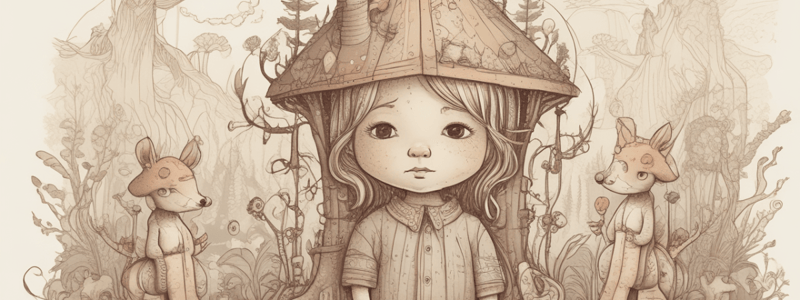Podcast
Questions and Answers
What can help solidify understanding in children?
What can help solidify understanding in children?
- Only an art activity using colors or shapes
- Only reading a book about colors or shapes
- Watching a movie about art and vocabulary
- An i-sensory experience followed by an art activity (correct)
How can vocabulary be broadened for children?
How can vocabulary be broadened for children?
- Only through writing stories
- Only through reading books
- Discussing art styles, techniques, and periods (correct)
- Watching educational videos
What can integrating writing into art activities achieve?
What can integrating writing into art activities achieve?
- Enhancing both literacy and engagement (correct)
- Making writing a meaningless activity
- Only improving literacy skills
- Reducing creativity in children
What does the integration of Arts activities achieve?
What does the integration of Arts activities achieve?
How can educators create an immersive learning environment?
How can educators create an immersive learning environment?
What can children do after creating art based on their favorite stories?
What can children do after creating art based on their favorite stories?
What can arts activities introduce children to?
What can arts activities introduce children to?
What can arts activities achieve in addition to literacy skills?
What can arts activities achieve in addition to literacy skills?
What do arts activities provide for children?
What do arts activities provide for children?
What can arts activities make learning more?
What can arts activities make learning more?
How do arts activities impact academic skills?
How do arts activities impact academic skills?
Study Notes
Strategy 5: Connecting to Children's Experiences
- Incorporating elements from children's own experiences and knowledge into Arts activities enriches their learning and engagement
- This approach makes art more relatable and maximizes educational impact by intertwining personal relevance with creative expression
- Linking art activities to children's experiences:
- Increases interest and participation levels
- Motivates children to engage deeply with the activity
- Allows for a deeper level of personal expression and processing of experiences
- Examples:
- Creating an art project about animals seen at the zoo
- Drawing a family holiday or sculpting a favorite park or playground
Strategy 6: Repeated and Progressive Exposure
- Incorporating repeated and progressive exposure to various art forms in early childhood education:
- Deepens children's understanding and appreciation of the Arts
- Builds a solid foundation of skills and maintains engagement
- Repetition:
- Develops familiarity and comfort with art forms
- Allows children to refine their skills through practice
- Progressive challenges:
- Prevent monotony and disengagement
- Gradually increase complexity to keep children engaged and motivated
- Examples:
- Mastering basic brush strokes in painting and progressing to mixing colors and creating textures
Strategy 7: Links to Literature and Real Life
- Integrating elements from children's literature and real-life experiences into Arts activities:
- Provides a holistic approach to learning
- Enriches literacy skills and showcases the relevance of Art in everyday life
- Examples:
- Drawing a favorite scene from a story or creating a character from a book using clay
- Creating a collage using natural materials collected during a park visit
- Painting a picture depicting a recent family event
Strategy 8: Reinforcing Language and Literacy
- Integrating language and literacy development into Arts activities:
- Enhances verbal abilities and reading skills
- Offers a dynamic and engaging approach to learning
- Examples:
- Creating visual narratives through drawing, painting, or constructing scenes with craft materials
- Participating in drama activities such as role-playing or puppet shows
- Engaging in discussions about artwork and the art of others
- Linking reading materials to art projects to reinforce literacy through a multi-sensory experience
Studying That Suits You
Use AI to generate personalized quizzes and flashcards to suit your learning preferences.
Description
Learn how incorporating children's experiences into art activities can enhance their learning and engagement. Discover the benefits of making art relatable and maximizing educational impact.




